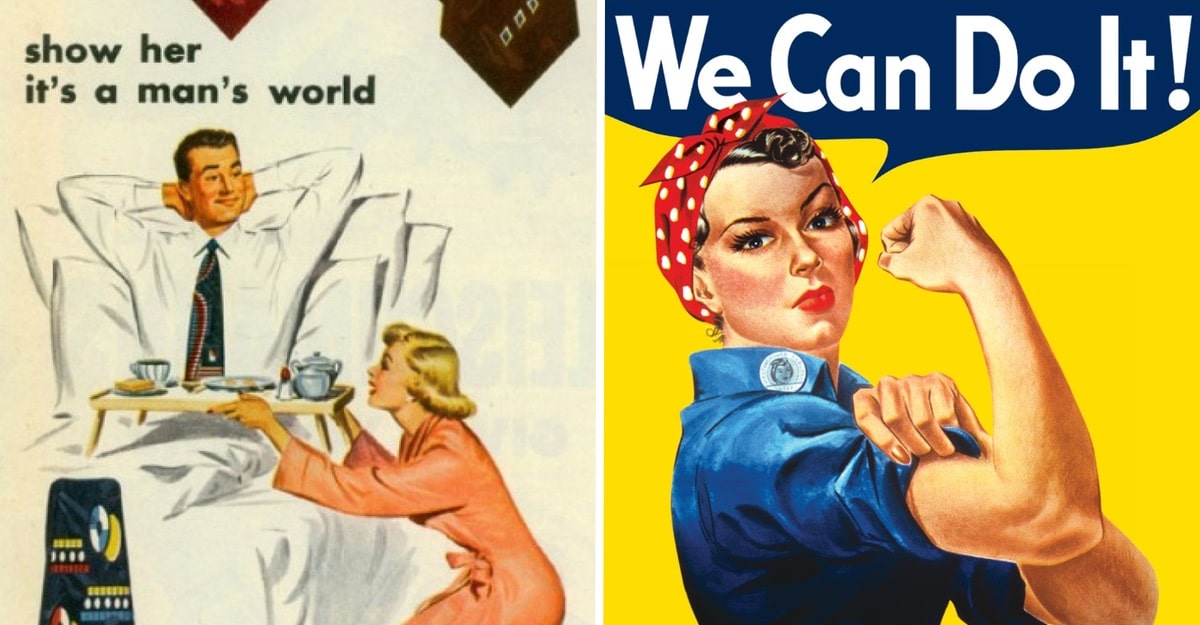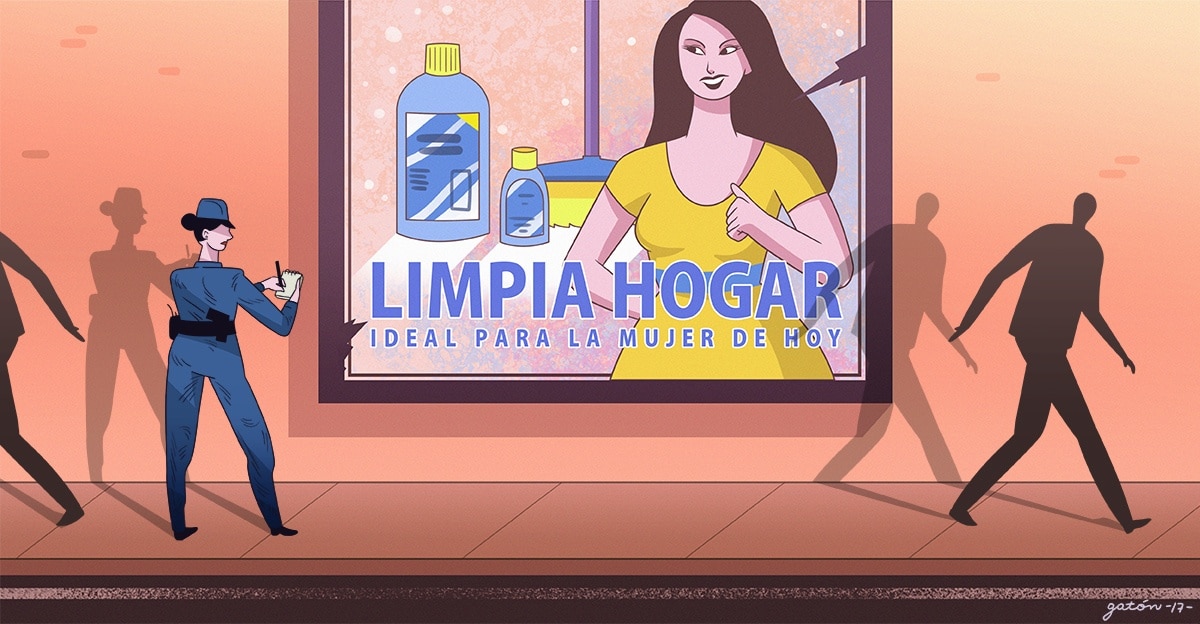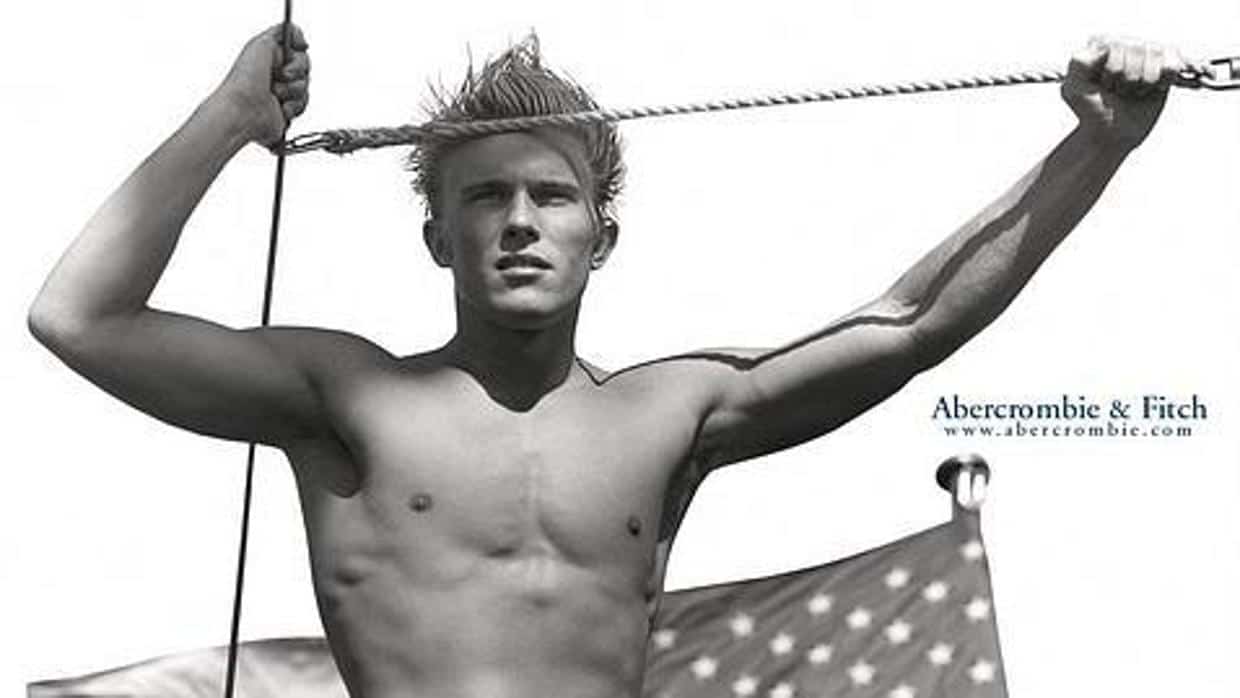
Source: The Journal
We as a society have always lived through a series of stereotypes that have marked us to date. Some of them have been considered sexist, others homophobic, racist or of any other negative aspect. That is why these stereotypes have always been linked to advertising media as well.
That is why in this post, We have come to talk to you about these stereotypes and how they have influenced in one way or another in the field of advertising. In addition, we are going to explain to you which stereotypes have been most affected in advertising media and how the ads have generated many hypotheses and questions in the viewers.
The stereotypes

Source: Graph
Before entering the world of advertising, we want to emphasize the term stereotype.
According to the dictionary, this term refers to to an image or idea that resembles and is commonly accepted by a particular social group. These images are conditioned by other factors of a social nature, such as age, sex, physical appearance of the person, the religion to which they belong, etc.
Ultimately, They are usually aspects that negatively affect the society in which we live. In fact, they are considered negative aspects because they are loaded with prejudices about other people.
A quick example of an advertising stereotype would be the use of the female figure in underwear where it is intended to captivate the viewer's attention and the message goes unnoticed. It is a way of sexualizing women and representing an image that is very inappropriate for the message that is really intended to be communicated.
General characteristics
Captivating
Stereotypes not only help the product to be sold in a more explicit and direct way, but they bring you closer to the public you are going to address at all times.
fictional roles
The problem with these prejudices is that they tend to create roles in people that do not exist. And this is not the only problem, since many people might not accept them. The problem is that they are standardized, this happens when the same cognitive pattern is repeated so many times and therefore, a unique message is created that is considered as something logical and usual.
For example, the color blue has always been associated with boys and the color pink with girls. In fact, if we search the Internet to what we associate the color pink or purple, the term immediately appears. femininity.
Social conflicts
The stereotypes they create social conflicts due to a misunderstanding of the message that has been wanted to communicate from the first moment. Many advertisements have had to be rejected due to the high buzz they have generated in many online media.
In short, stereotypes have always been considered negative aspects that, beyond being striking and captivating, have managed to establish erroneous patterns in our society.
Next, we will explain more about these stereotypes and we will show you some of the most representative examples in the world of television and commercials.
Types of advertising stereotypes

Source: Advertising Newspaper
Interpretation of the male figure as the strongest and most powerful
In many advertisements, the male figure has always been used to interpret and dress her as a superhero, recharged with muscles and strength. In addition, blue clothing has never been lacking, a color that, as specified above, has always been associated with men.
In addition, it is not necessary to enter the world of superheroes to show another example, in many films the figure of man is the only one who can run businesses and achieve their goals. Another aspect that has generated great repercussion.
The role of man and machinery
If we continue talking about the male figure, we come to the conclusion that the man, as an advertising stereotype, has always been introduced as in the Mario Bros game, a character who rescues a princess in distress.
In addition, in the vast majority of ads that talk about technology or construction tools, the main character or the main figure of the ad is the man. Rarely will we see a female figure holding a hammer, Otherwise, in advertising and in society, this image has always been considered inappropriate in terms of sex.
Women, advertising and cars
It is true that currently, many car companies such as Audi or Cupra have used female figures for their advertisements or spots. But if we look back, the "normal" for many companies was to use the figure of a man driving a high-end car over a mountainous landscape at full speed.
Today this role is a little more unknown than the previous ones. For example, Cupra has used the figure of Alexia, the FC Barcelona player, as the main image of the spot.
«The ball for the boy and the kitchen for the girl»
Imagine a situation like this: Christmas time and family dinner, it's time to distribute the gifts and... surprise! The boy has got the new Champions League ball and the girl a kitchen that also has built-in music, so that don't get overwhelmed while preparing breakfast.
And you may wonder what this peculiar situation is due to, because the answer lies in advertising, advertising has been responsible for associating that the boy has to be a great footballer and that the girl must be a good housewife. Also, sure the kitchen is pink and the kid's football boots are blue. All these erroneous and fictitious roles that advertising has invented have made them part of our society today.
So, in general, it would be not to associate any color to a certain gender, as well as any sport and any activity related to the home.
There are many stereotypes that advertising has created over the years. But these have always been the most common.
The different roles
Women

Source: The Defined
The woman in advertising has always been defined as a weak and submissive figure who has had to live with characters such as: housewife, wife or mother, if working abroad is a secretary, nurse or lawyer. In many commercials, it is shown selling beauty products such as lipstick or eye shadow, or household products: glass cleaner, etc.
Sometimes, it has also been a product of beauty or desire to captivate the viewer's attention. This happens in advertisements for women's lingerie, where the main objective is not the lingerie, but the model's body. But if we take a look at today's news, advertising has maintained the same roles but the concept of super woman has been applied to it. A strong woman prepared to deal with household chores and child care.
Unfortunately, prejudices in the advertising field continue to hold their own. A line that is becoming much finer and that crosses more screens and therefore, much more conflicts of a social nature are generated.
The man

Fuente: ABC
The man is also overloaded with non-existent roles. In advertising or even in the cinematographic field, the male figure has always denoted a certain aggressiveness, dominant behavior, stability, strength and power.
Currently, the figure of the man is also considered an object in many advertisements. Where it is about exalting and giving more value to the physical appearance than to what is really behind the message. Undoubtedly, both genres have had to deal with many prejudices that are not correct and that unfortunately are currently given too much prominence.
Teens
Whenever we are presented with the word adolescent, our minds think of a set of people who are conspicuous by their youth, who are insecure with themselves and who, therefore, are considered unstable people. But not everything is bad, advertising has also been in charge of benefiting them by putting forward that they are independent people.
In the advertising field, youth have always been used as a selfish social group, capable of thinking only for themselves and surrounded by thoughts that are interspersed with partying, drug use or technology abuse.
Without a doubt another role that has left many conflicts.
Conclusion
As we have analysed, advertising has designed one role, combining social aspects such as gender, age or religion and has brought them together to create patterns that are completely wrong. Fortunately, much of the advertising we see today has moved away from these very sexist aspects. So it is not much more comfortable to be able to see ads without the need to generate conflicts.
We hope you have learned a little more about the "dark side" of advertising and continue to search for many more interesting stereotypes.